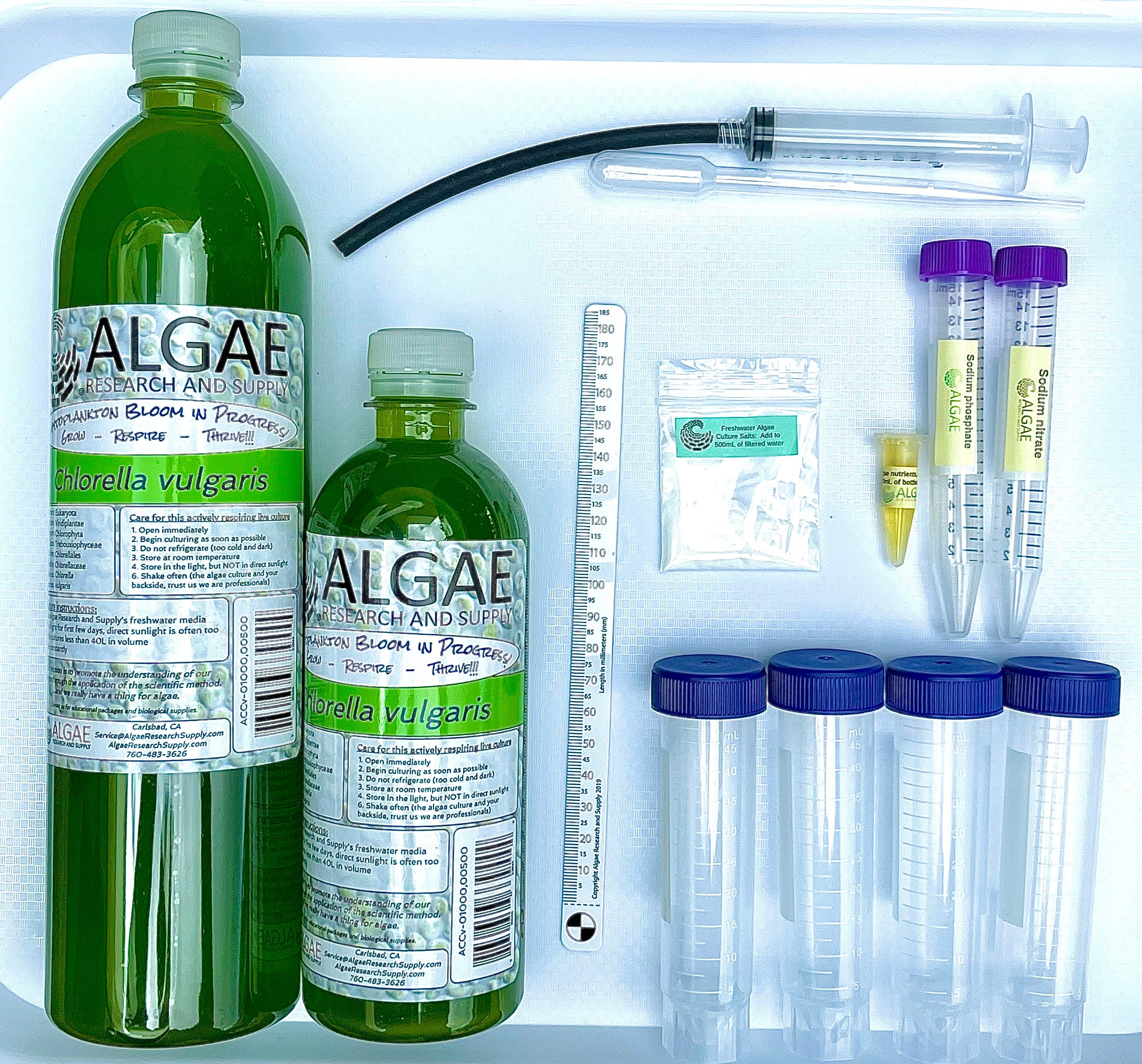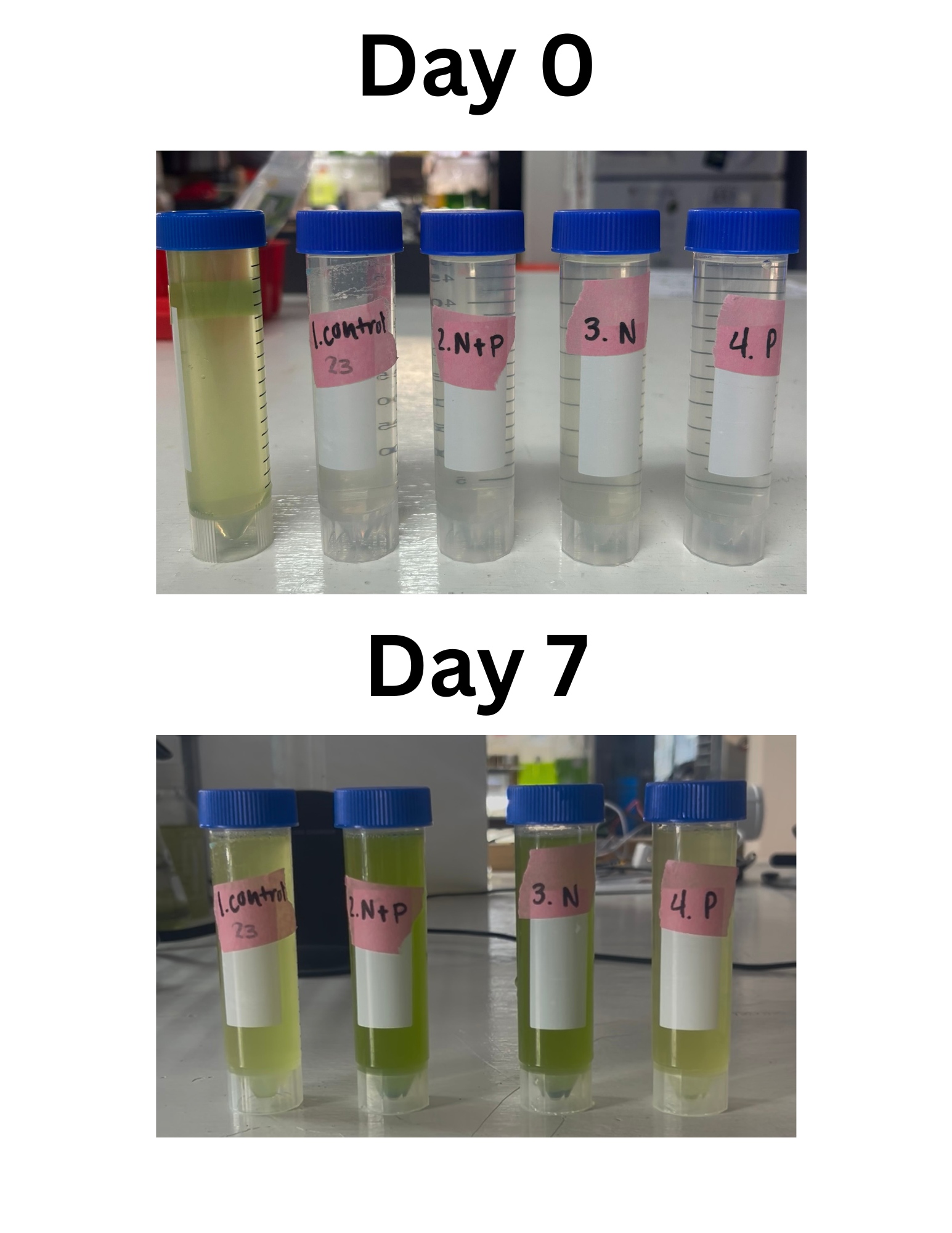




Eutrophication Lab Teaching Kit: AP Environmental Science LAB 15: AN INVESTIGATION OF Eutrophication
Have leftover supplies from last year? Get a refill kit here! https://algaeresearchsupply.com/products/eutrophication-lab-teaching-kit-refill-ap-environmental-science-lab-15-an-investigation-of-eutrophication-copy
Eutrophication Lab Teaching Kit
Overview:
Laboratory-15 for AP Environmental Science is a comprehensive and educational exploration of eutrophication, aligned with the approved materials by the AP Boards. This laboratory exercise offers students the opportunity to gain valuable insights into one of the most pressing environmental issues – the excessive nutrient enrichment of aquatic ecosystems. Through hands-on experimentation and the use of specialized materials, students will delve into the intricate dynamics of eutrophication, its causes, and potential solutions.
Learning Objectives:
- Develop a deep understanding of eutrophication and its consequences on aquatic ecosystems.
- Investigate the role of nitrogen (N) and phosphorus (P) as primary nutrients responsible for eutrophication.
- Analyze the importance of nutrient management and its implications for environmental conservation.
- Enhance critical thinking, data collection, and analysis skills through practical experimentation.
Materials in the Kit:
- Nutrient limited Chlorella (algae culture) – Essential for creating the aquatic ecosystem. We starve the Chlorella in the lab to ensure dramatic results in your classroom
- Freshwater Salts – Used to prepare 500mL of freshwater in accordance with AP standards.
- NaNO3 Solution – Providing a nitrogen source for the experiments.
- K2HPO4 Solution – Supplying phosphate for the simulated eutrophication process.
- Self-Standing Tubes (50mL) – Four per group, facilitating controlled experiments.
- Secchi Stick – A tool for measuring water turbidity, a critical parameter in eutrophication studies.
- Syringe (10mL) – Precise culture addition for controlled experimentation.
- Graduated Pipette (3mL) – Ensuring accurate measurement of materials.
General Experiment Procedure:
- Prepare the culture media with salts and dechlorinated water
- Label your four centrifuge tubes: Control, +Phosphate, +Nitrate, +both Phosphate and Nitrate
- Add 40mL of media and 10mL of Chlorella into each tube
- Add one drop of nutrients into each corresponding tube
- Record the biomass growth, daily, using the Secchi stick
- Analyze the data to draw informed conclusions about the effects of nutrient loading on the ecosystem, emphasizing the significance of nitrogen and phosphorus in eutrophication, and exploring potential mitigation strategies
Key Takeaways:
- Students will gain a comprehensive understanding of the eutrophication process and its ecological implications.
- They will learn to quantify the impact of different nutrient sources on aquatic systems.
- This laboratory exercise encourages the development of critical thinking and data interpretation skills.
- The investigation prepares students to engage in practical applications of eutrophication mitigation and environmental management.
Educational Impact:
AP Environmental Science Classroom Laboratory-15 on eutrophication, featuring materials in line with AP Board approval, offers an engaging and educational opportunity for students to explore a critical environmental issue. This hands-on experiment equips students with the knowledge and skills necessary to comprehend and address complex environmental challenges effectively, aligning with the AP Environmental Science curriculum's objectives.
Pairs well with

Eutrophication Lab Teaching Kit: AP Environmental Science LAB 15: AN INVESTIGATION OF Eutrophication


